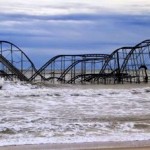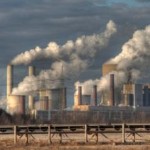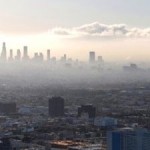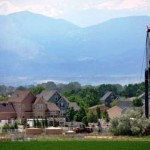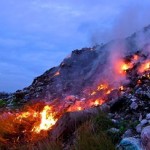“Our work confirms that reducing emissions of ozone precursors would have an enormous effect on the air we all breathe,” Pfister said.
Pfister and a nationwide scientific team expect to learn more about the sources, chemistry, and movement of air pollutants this summer when they launch a major field experiment known as FRAPPÉ along Colorado’s Front Range.
The Role of Supercomputing
The new study was among the first conducted on the new 1.5-petaflop Yellowstone supercomputer. The IBM system, operated by NCAR and supported by funding from the NSF and the University of Wyoming, is one of the world’s most powerful computers specifically dedicated to research in the atmospheric and related sciences.
Thanks to its computing power, the scientists were able to simulate pollution levels hour by hour for 39 hypothetical summers. This allowed the team to account for year-to-year variations in meteorological conditions, such as hot and dry vs. cool and wet, thereby getting a more detailed and statistically significant picture of future pollution levels.
To simulate the interplay of global climate with regional pollution conditions, the scientists turned to two of the world’s leading atmospheric models, both based at NCAR and developed through broad collaborations with the atmospheric science community. They used the Community Earth System Model, funded primarily by the Department of Energy and NSF, to simulate global climate as well as atmospheric chemistry conditions. They also used an air chemistry version of the multi-agency Weather Research and Forecasting model to obtain a more detailed picture of regional ozone levels.
Even with Yellowstone’s advanced computing speed, it took months to complete the complex simulations.
“This research would not have been possible even just a couple of years ago,” said Pfister. “Without the new computing power made possible by Yellowstone, you cannot depict the necessary detail of future changes in air chemistry over small areas, including the urban centers where most Americans live.”
Details of the Study:
Title of the Study: “Projections of Future Summertime Ozone over the U.S.”
Authors: G. G. Pfister, S. Walters, J.-F. Lamarque, J. Fast, M.C. Barth, J. Wong, J. Done, G. Holland, and C.L. Bruyére
Published in Journal of Geophysical Research Atmospheres; Volume 119, Issue 9, pages 5559–5582, 16 May 2014
Check the following link to read/download the Full Study:
http://onlinelibrary.wiley.com/doi/10.1002/2013JD020932/abstract
Source: UCAR.
The University Corporation for Atmospheric Research (UCAR) manages the National Center for Atmospheric Research (NCAR) under sponsorship by the National Science Foundation (NSF).

